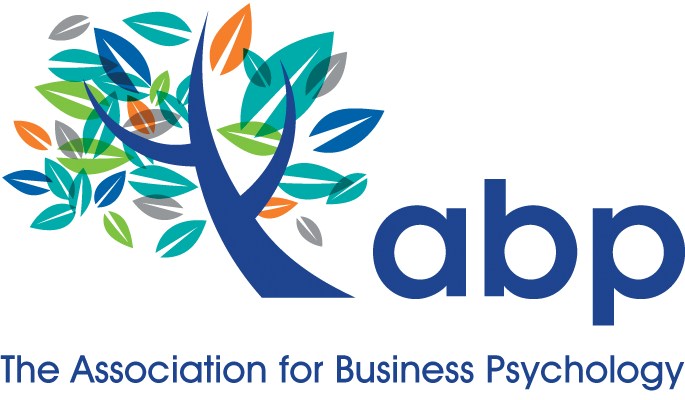What does a great day at work look like for you? Is it flying through your to-do list, to earn a quiet afternoon? Maybe it’s a hectic schedule, jumping from meeting to meeting, feeling productively busy? Or perhaps, it involves reaching a key milestone, feeling…

“Staying well-informed of the demands and changes of a job, requires you to continuously learn, reflect and evolve”
Author: Uzma Waseem (Head of Early Talent, ABP)
As a jobseeker you are now facing a hugely different landscape compared to over a month ago. Since lockdown began, ‘challenging; complicated; confusion’ may not even begin to describe it. Opportunities and working dynamics have drastically changed and may appear highly constrained. With this unique blend, as a jobseeker preparing for future opportunities or meeting the existing requirements for new responsibilities, the anxiety surrounding you is potentially magnified.
However, while some firms may have put a freeze on hiring and others are cutting back on staff – recruitment has spiked in efforts to fill critical positions across a number of industries from retail, transport and logistics to IT and telecoms (Anderson, 2020). Much of this echo worldwide and according to Robert Walters Hiring Intentions Survey, these select industries appear to remain resilient throughout COVID-19. The question is, as emerging Business Psychologists how can you keep your job search active, relevant, and above board during the current pandemic?
Connecting the Dots
Quarantine life occurred overnight. However, this doesn’t mean that circumstances will completely dictate the way we can pursue our own career development. We don’t need to make critical career decisions at the same velocity that we were placed into this new lifestyle. Without a targeted approach, the risk of going into a complete frenzy is far greater. There is potentially more to gain from pausing, reasoning, and creating a well-informed plan before propelling yourselves into action.
Many emerging business psychologists aspire to gain critical experience with established hirers. Now is the time to actively start sense-making and strategizing. An ideal starting point would be to create a list of targeted firms in industries that are currently doing well:
- Reflect on what areas of business psychology you want to build your expertise in.
Like many of us have learned, Although the conventional view of business psychology often leads us to believe selection and assessment is the dominating area (and you’re not entirely wrong), it’s not all psychometric testing and employee selection. It’s worth exploring and understanding other areas including the unusual contexts that some business psychologists work in. Business psychology can be applied to almost any people issue in the workplace. Admittedly, this can heighten the effort needed to refine your options. However, several domains have been established so the decision-making process should be more practicable.
- List which industries appeal to you.
When exploring potential employers, you’re more than likely to see the public sector (specifically government and public services) topping the lists. The Civil Service is one of the largest employers of psychologists, where many work for the Ministry of Defence, Civil Service Commission, Home Office, Prison Service and the Employment Department Group. However, industries bearing a significant proportion of employment of psychologists also span across:
- scientific research and development services
- management and technical consulting services
- colleges, universities, and professional schools
- management of companies and enterprises
And many of which operate across a range of major groups i.e. business and financial operations; engineering; healthcare support; construction; IT; transportation; art, entertainment, sports and media; food, travel and services etc.
- Map these key features across to the most fitting firms or industries.
The pre Covid-19 Future of Jobs Report’s research (WEF, 2016) indicated that the top three job groups forecasted to be highest in demand include business and financial operations management; computer and mathematical; architecture and engineering. Reviewing and aligning this to forecasts under the current climate as well as personal preferences will further refine options and reduce confusion.
The key objective here is reduce your choices purposefully. Too many options can be overwhelming, confusing and reduce the impetus to competently move forward. As Schawrtz (2005) suggested, avoid falling into the paradox of choice which otherwise could lead to greater dissatisfaction.
Benefiting from Job Crafting
Although there are differing opinions over whether ‘choice overload’ itself causes negative effects, there is however greater consensus that negative effects depend on certain preconditions specifically a ‘lack of familiarity’ and ‘prior preference’ within the domain a choice taking place (Scheibehenne, 2010). Despite the arguments for and against choice overload, it’s doubtful that many would want to add further complexity to an already volatile situation. So how can we balance the desire for choice with control and confidence in our future career development?
Several studies have established that ‘decision freedom’ is positively related to job crafting (Demerouti, 2014). Job crafting is commonly associated with changes an individual initiates alongside job demands and job resources to make their own job more meaningful, engaging and satisfying. Demerouti reports that where pressure and autonomy are both high, individuals showed more resource-seeking and less demands-reducing behaviours. More importantly, job-crafting is found to be a useful strategy to deal with change and adapt to demands of a dynamic workplace. It therefore seems to be a fitting response to overcome the complexity and uncertainty that has been amplified under the current Covid-climate.
If nothing else, now seems like a good time to start investing in some knowledge acquisition relating to the current labour market, funnel through preferences and options, and start generating a personal job-crafting plan.
Design Approach: Structured to be Creative
While business psychology has never really had a clear-cut career path, many psychologists tend to fall in the private practice, research, and teaching career camps. However, recent grads have increasingly started to create new, lesser travelled career paths. Many Business Psychology graduates have embarked on training thinking they would be a practitioner. However, several have revamped their expectations as they progress towards the end of their academic journey. Subsequent grads can take a lesson from this and give themselves a head start by taking a self-managed and innovative approach to their own career growth earlier.
Innovation doesn’t always refer to a completely novel idea but can also be the creation of a new combination of things that already exist (Krogerus & Tschappeler, 2017). With the current uncertainty of work and changing labour market added to the breadth of areas traditionally open to you, there is little reason not to innovatively craft a role that combines several aspects of teaching, research, and consultancy. A large portion of business psychologists have successfully managed a portfolio career, working in-house with larger organisations or with small consultancies and freelancing as a side hustle. The question is how do you establish the right combination?
Structuring and exploring sets of relationships contained in multidimensional problem complexes need not be complicated. In business, the Morphological Box decision-making tool has been around for a while. It can be a quick and easy option to solve problems that involve many different components and as a creative method to develop new solutions. So how does morphological box analysis work?
- List all the relevant parameters (e.g. business psychology domains etc.). Brainstorm to establish the attributes (requirements/preferences) and ascribe several attributes to each parameter. This requires a bit of research as well as creativity.
- Where each of these different attributes align with the parameters listed, connect the attributes with a line. You know have a visual of your options (see table below).
- Review whether the configurations can form the basis of a career path or does it need further refining? Like many innovation processes that use an iterative design approach, developing a workable career path follows the same premise and may require you to abandon and switch features (attributes) or add some new ones.

This is a simple illustration of two career streams that could potentially work together based on an individual’s preferences and a matter to further refinement. No doubt the career trajectories will be subject to an individual’s selection of parameters, their attributes, and the level of specificity assigned to the choices.
[For more information on using morphological box analysis and job-crafting interventions, please contact [email protected]].
References
Anderson, E. (2020, March 31). Coronavirus Jobs: The UK companies and sectors urgently looking for workers, from farms to supermarkets. HM Government. Retrieved from https://inews.co.uk/news/business/coronavirus-jobs-uk-near-me-covid-19-outbreak-temporary-work-2524031
Demerouti, E. (2014). Design your own job through job crafting. European Psychologist, 19(4), 237-247. Retrieved from https://doi.org/10.1027/1016-9040/a000188
Krogerus, M. & Tschappeler, R. 2017). The Decision Book: Fifty models for strategic thinking. Switzerland: Kein & Aber AG Zurich
World Economic Forum (2016). Executive Summary: The Future of Jobs. Weforum. Retrieved from http://www3.weforum.org/docs/WEF_FOJ_Executive_Summary_Jobs.pdf
Schwartz, B. (2005). The Paradox of Choice: Why less is more. US: Harper Perennial.
Scheibehenne, B. Greifeneder, R. & Todd, P. M. (2010). Can there ever be too many options? A meta-analytic review of choice overload (PDF). Journal of Consumer Research. 37(3), 409–425.



